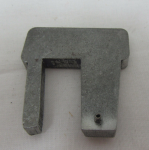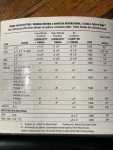Hi Barrman,
I have a 6.2 N/A in a 1985 M1009, which I am still restoring at this stage.
Adding a turbo may be something for later on, once it is on the road...
I had white smoke at idle and most engine speeds actually, so checked the timing and it was -4°.
I assume this is caused by timing chain stretch/slack (?)
So I advanced the IP about 5mm which should correspond to 10° crankshaft rotation and now am at + 5.5° at 1300 RPM.
No more white smoke at this stage, at idle rattles a bit more.
You are right, the DB2 retards timing as RPM increases, I noticed this as well when using the Tach-N-Time, which is quite surprising actually. While your explanation does make sense, diesel timing is normally additionally advanced in relation to RPM increase. Timing advance on diesel engines is normally even more then gasoline engines, because the combustion of diesel fuel takes a little more time, due to the properties of diesel fuel itself as well as the method and time of mixing and vaporizing.
Generally speaking static diesel timing advance on German engines averages around 15°, which is a lot. This is although for old diesel engines and when manually setting the timing, without testing or measuring equipment and done as follows:
- Disconnect high pressure line at the IP for injector No 1
- Manually rotate engine and observe the exact point when the first drop of fuel is pumped out.
- This should be 15° BTDC.
Obviously this is not the exact point when the nozzle valve opens, nor when combustion starts as the crankshaft will have turned a number of degrees further towards TDC before fuel is actually ignited and combustion starts. First off, the nozzle will only spray into the pre-combustion chamber as and when the opening pressure of 125Bar is reached, which takes a few crank degrees. Next there is the actual combustion delay, which will add a few more degrees of crank rotation before combustion really takes place. One can imagine this takes us down to 4° BTDC at 1300RPM.
I'll have to do a comparative test on a few of the German diesel engines I have here (1957 MWN AKD 112 Z (MWM=Motoren Werke Mannheim), 1968 MWM D-322-3, 1969 MWM AKD 10 V and a Henschel D4 5.200cc) and then compare with the readings from my Tach-N-Time, just to see how many degrees difference there is between the manual timing advance setup and the actual/Tach-N-Time measured timing advance. Could be interesting....
On the other hand, I recently read this chapter in the GM 6.2 Diesel Engine Manual: page 208 or 4-106 gives a typical, unretouched, four channel oscilloscope photograph of a Stanadyne fuel injection pump operating at full speed and full load on a 219CID turbocharged diesel engine. On this engine, the pump discharge begins at 28° BTDC engine timing. This is 14° pump timing. The advance mechanism was adjusted to produce an 8° pump speed advance (16° engine) with a 12° BTDC static engine timing.
According to the manuals, my MWM diesel engine the AKD 112 Z has a timing advance of about 28-29° BTDC and the AKD 10 V has 29° to 31° BTDC advance. These are both IDI and slow running diesels, with maximum 2000 RPM governed speed and no dynamic timing advance with RPM, so fixed timing . Obviously these have a humongous large and heavy flywheel, too heavy for a single person to lift. One would assume that when running at such low RPMs, timing advance should be even less then with faster running diesels to avoid harsh idle and piston knock...
Note that these old MWM engines however will run on anything from diesel fuel to heavy (waste/vegetable/gear/...) oil, (well filtered of course)
Intersting topic, perhaps more Q's then A's but interesting nevertheless.
Jake





